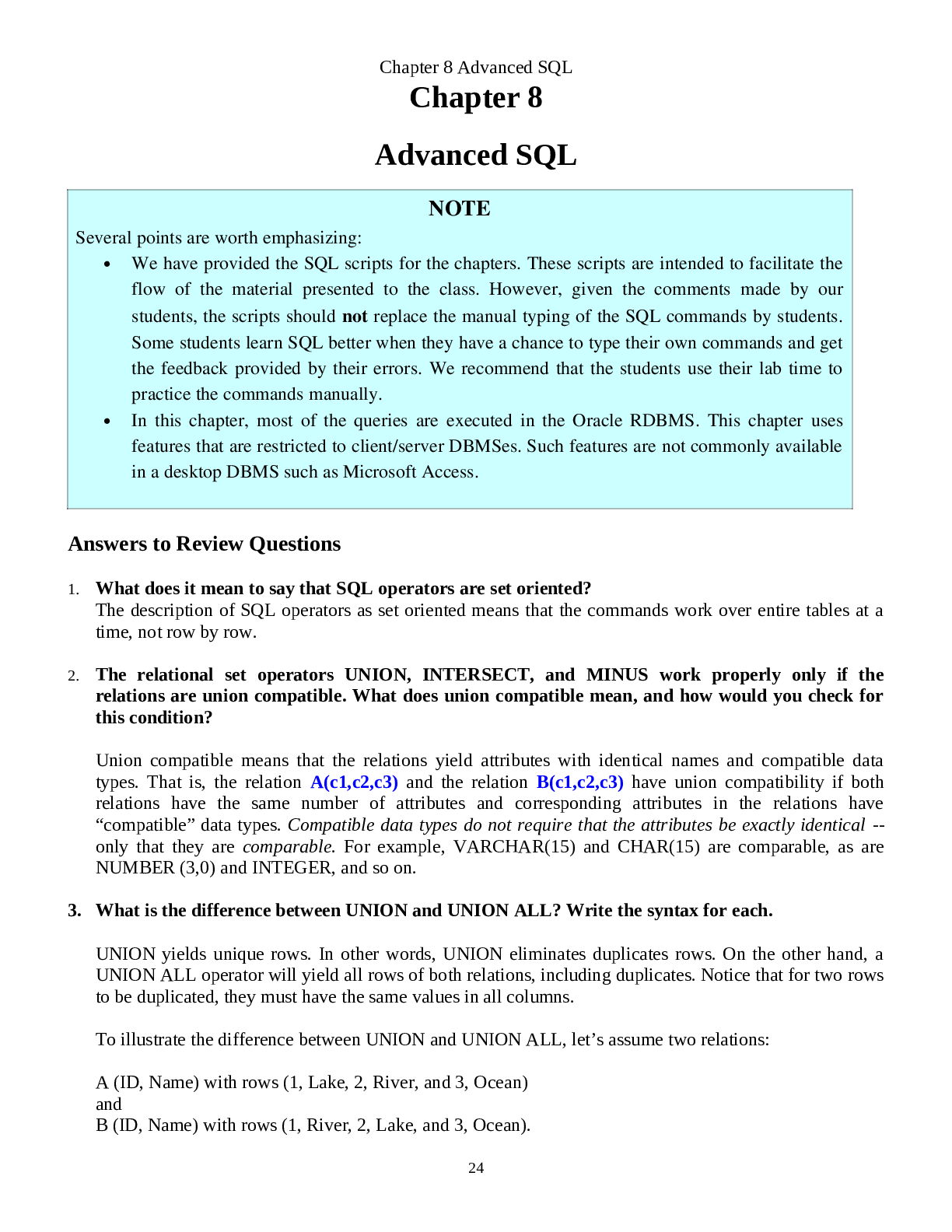History > QUESTIONS & ANSWERS > Mary M Knight High School Unit_1_Review_Ap_Gov_2020-REVIEWED AND EDITED BY EXPERTS 2021 (All)
Mary M Knight High School Unit_1_Review_Ap_Gov_2020-REVIEWED AND EDITED BY EXPERTS 2021
Document Content and Description Below
Name: _______________________________________________ Period: ________ Date: ________ AP U.S. GOVERNMENT AND POLITICS Unit 1- Constitutional Democracy – Review Packet The U.S. Constitution arose... out of important historical and philosophical ideas and preferences regarding popular sovereignty and limited government. Compromises were made during the Constitutional Convention and ratification debates, and these compromises have frequently been the source of conflict in U.S. politics over the proper balance between individual freedom, social order, and equality of opportunity. The first semblance of a national government created after independence was a state centered, decentralized system that reflected a fear of a powerful central government. Yet, the lack of powers held by the weak national Congress, coupled with each state’s independent and often conflicting actions, raised concerns with such key actors as James Madison and Alexander Hamilton as to whether the Articles of Confederation were able to protect the new nation. The weaknesses led to a call for change and a decision to host a convention to revise the Articles. The convention itself was a triumph of negotiation, collaboration, and compromise, extending beyond the delegates’ original mandate. It led to the creation of a new constitution that granted more centralized authority, while dispersing powers among three branches in the national government, and reserving powers and authority to the states to govern within their borders. The group that favored the new federal Constitution, the Federalists, argued that the constitutional separation of powers and checks and balances would protect people from governmental tyranny and unify the nation. The Federalists also argued that although the Constitution lacked a specific listing of rights, it protected civil liberties in general by limiting the national government to powers that were enumerated. By contrast, the Anti-Federalists argued against the new federal system, claiming that the new Constitution would erode the sovereignty of the states, the prominence of local self-government, and their inherited liberties, as it lacked a specific listing of rights needed to protect the people from the national government. The Federalists, after James Madison’s eventual concurrence, promised the Anti-Federalists that they would support the addition of a bill of rights once the Constitution was ratified. The Constitution was ratified in 1788 although the last state, Rhode Island, did not ratify it until 1790. The Bill of Rights, the first ten amendments to the U.S. Constitution, was ratified in 1791. More than 200 years later, the compromises that were necessary for the Constitution’s ratification, and in some instances led to ambiguity, continue to fuel debate and sometimes even conflict over how best to protect liberty, equality, order, and private property. Essential Questions How did the founders of the U.S. Constitution attempt to protect individual liberty, while also promoting public order and safety? How have theory, debate, and compromise influenced the U.S. Constitutional system? N [Show More]
Last updated: 2 years ago
Preview 1 out of 3 pages

Buy this document to get the full access instantly
Instant Download Access after purchase
Buy NowInstant download
We Accept:

Reviews( 0 )
$7.00
Can't find what you want? Try our AI powered Search
Document information
Connected school, study & course
About the document
Uploaded On
May 09, 2021
Number of pages
3
Written in
Additional information
This document has been written for:
Uploaded
May 09, 2021
Downloads
0
Views
73








.png)

.png)






.png)
.png)

.png)

.png)



